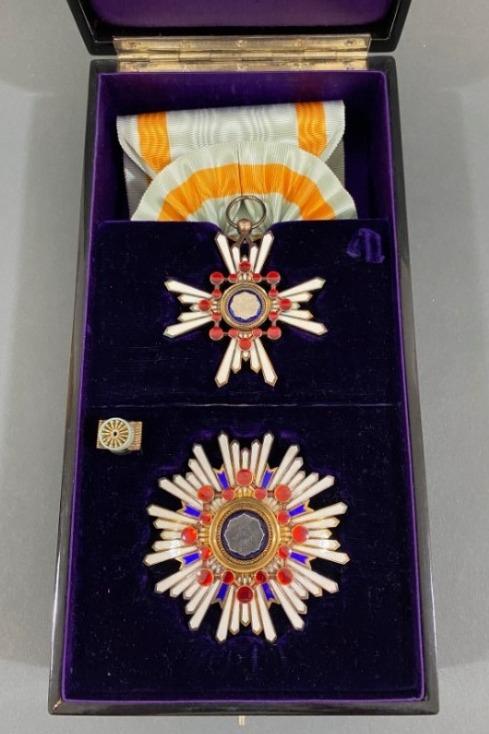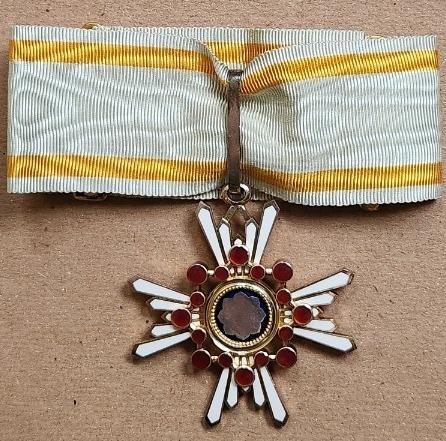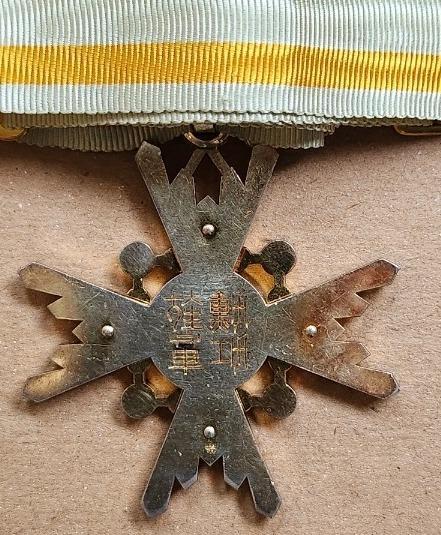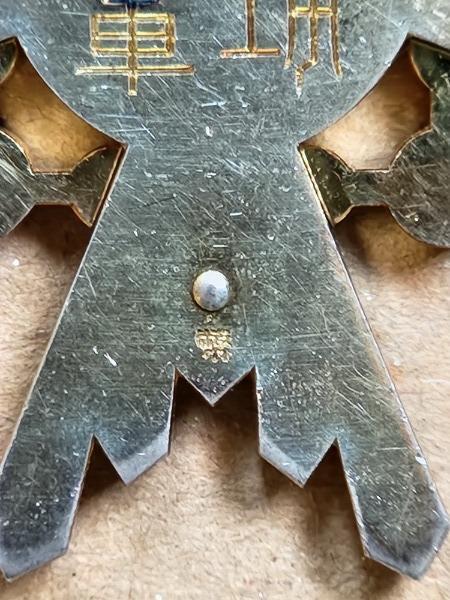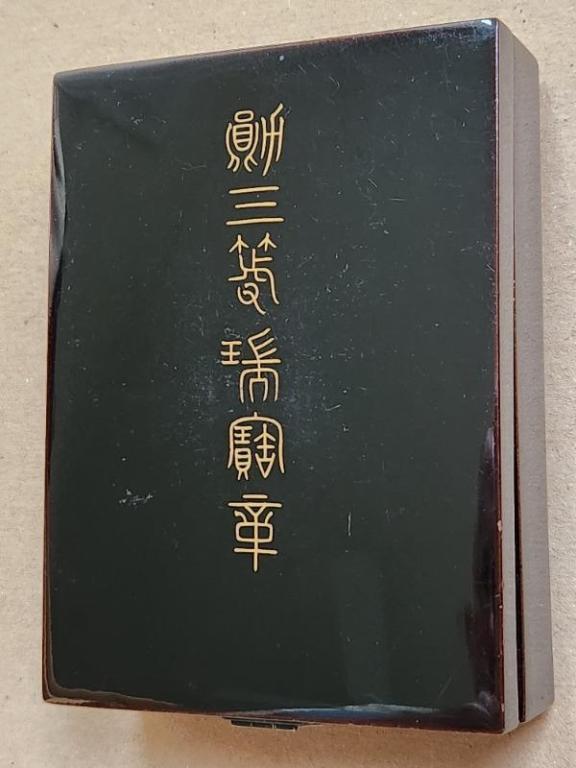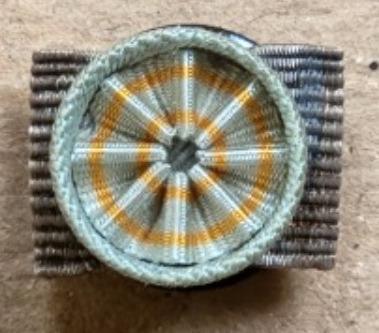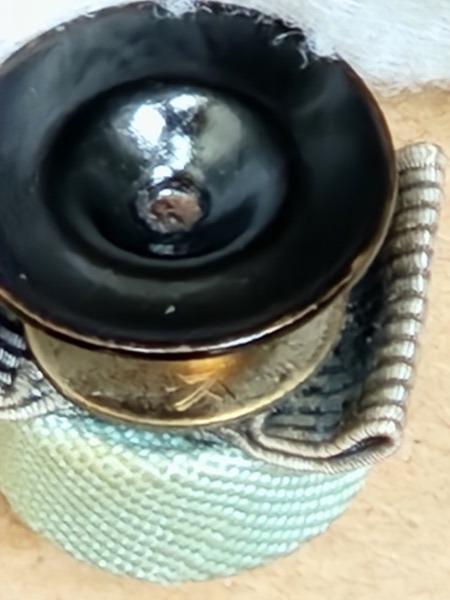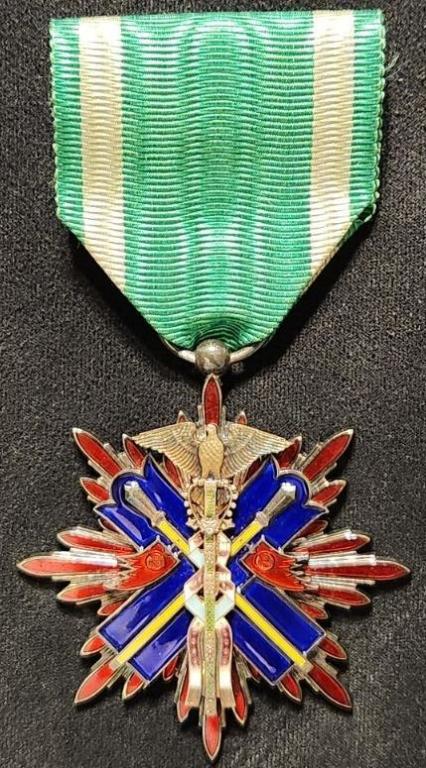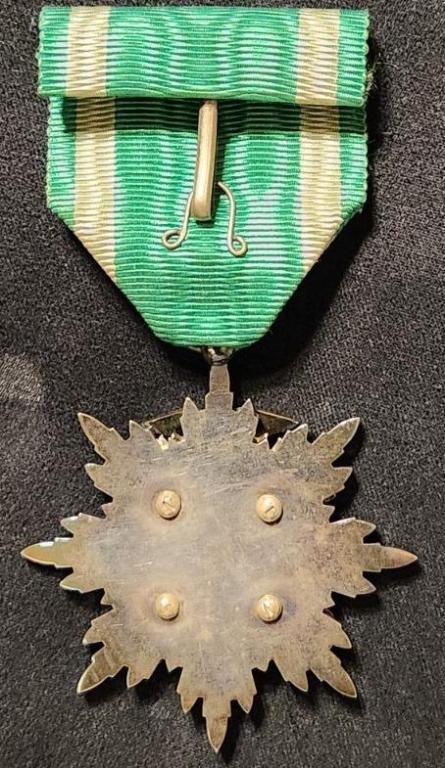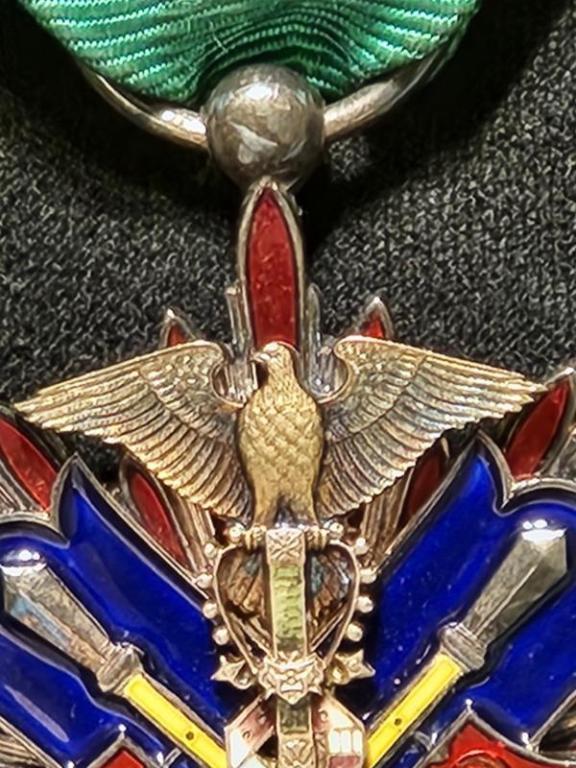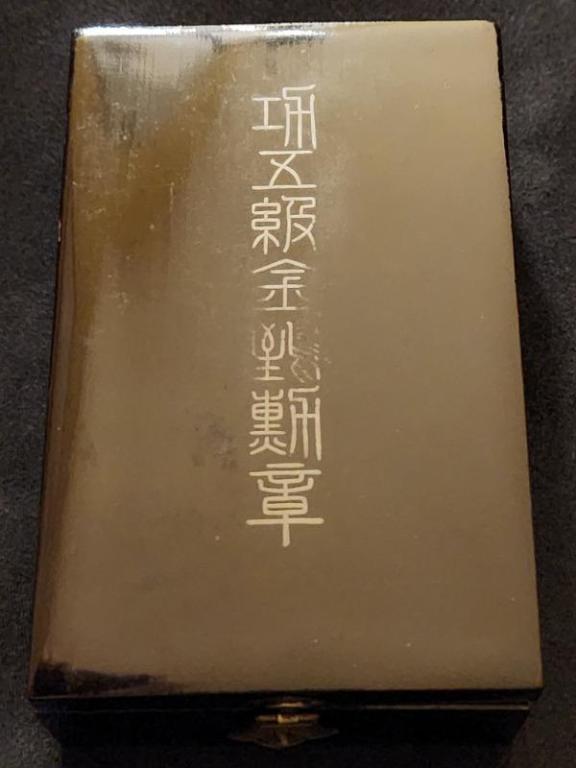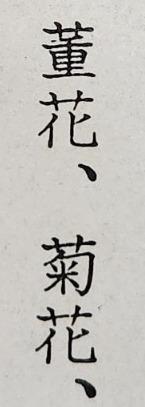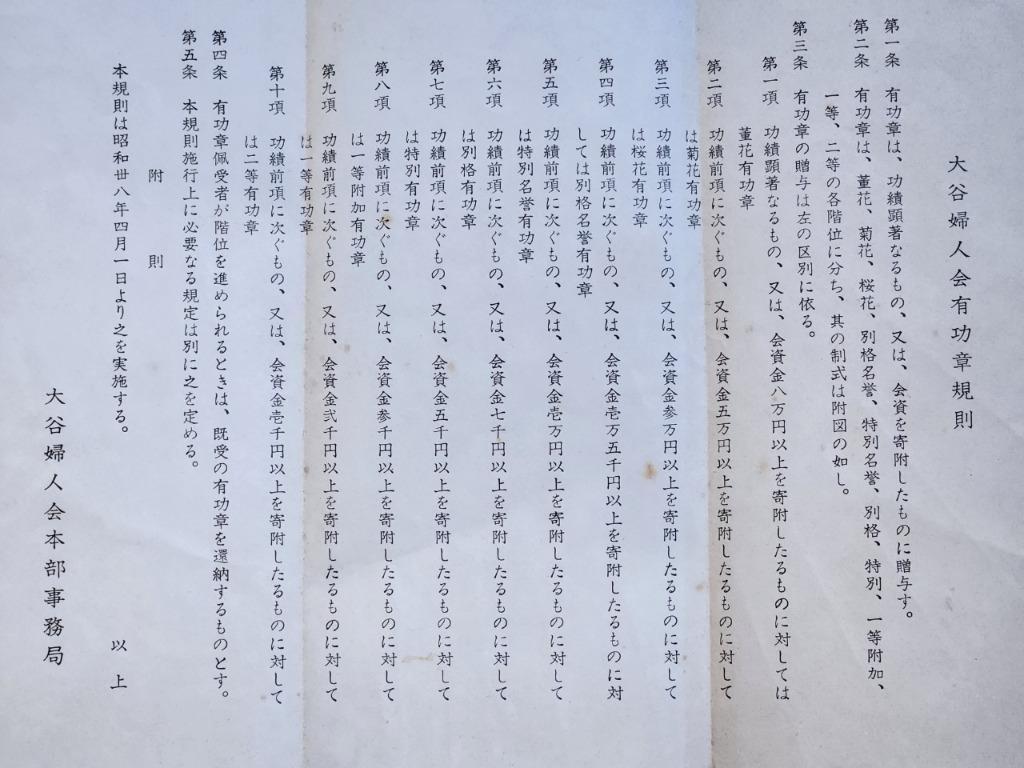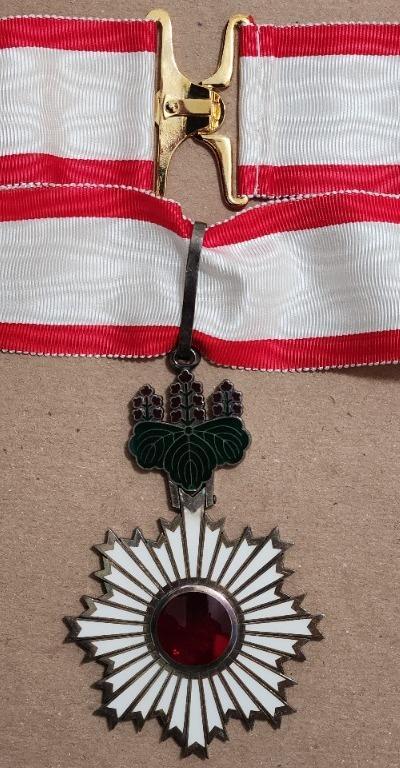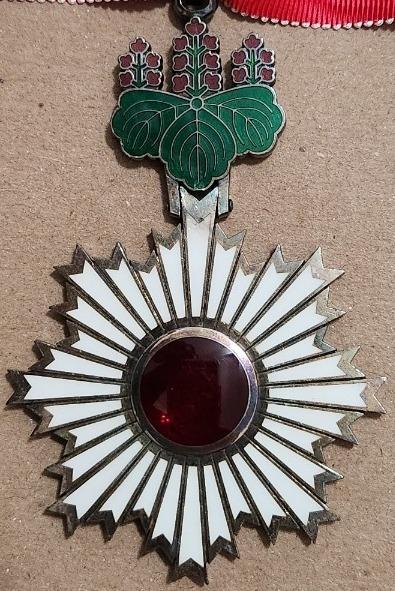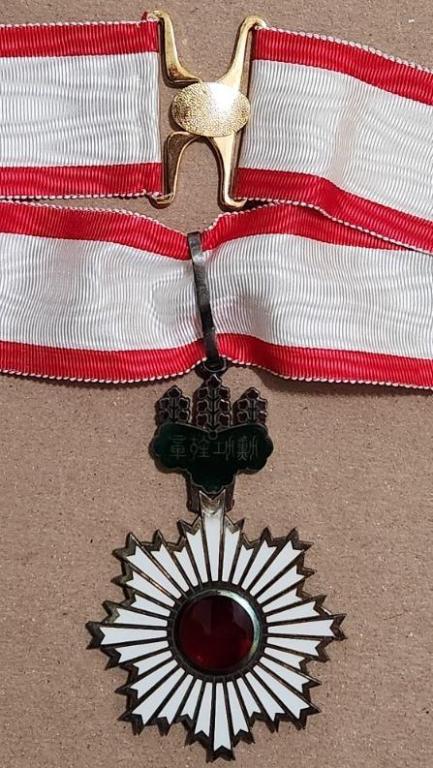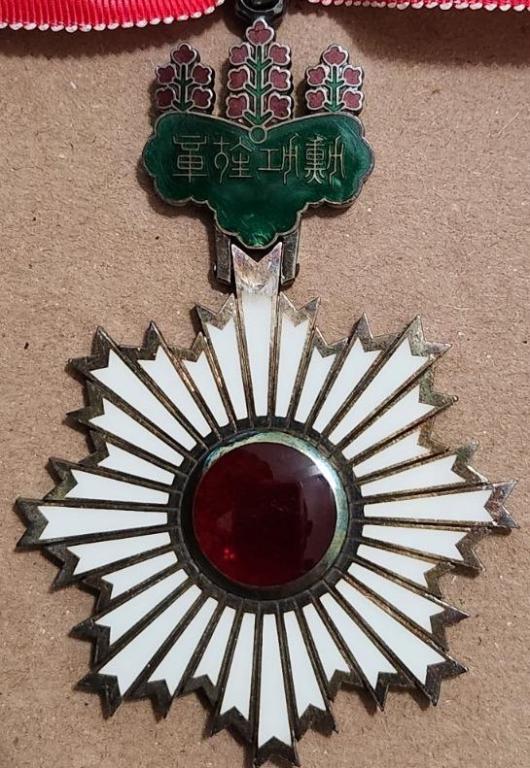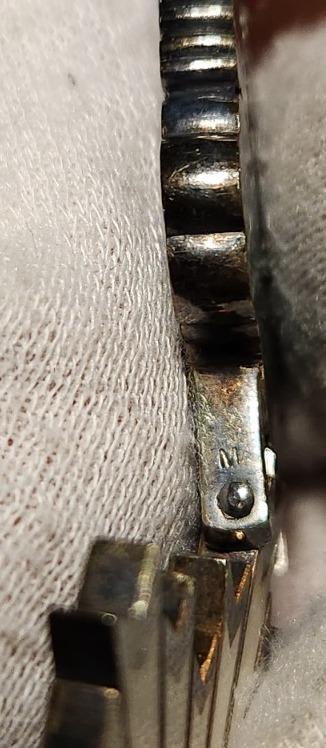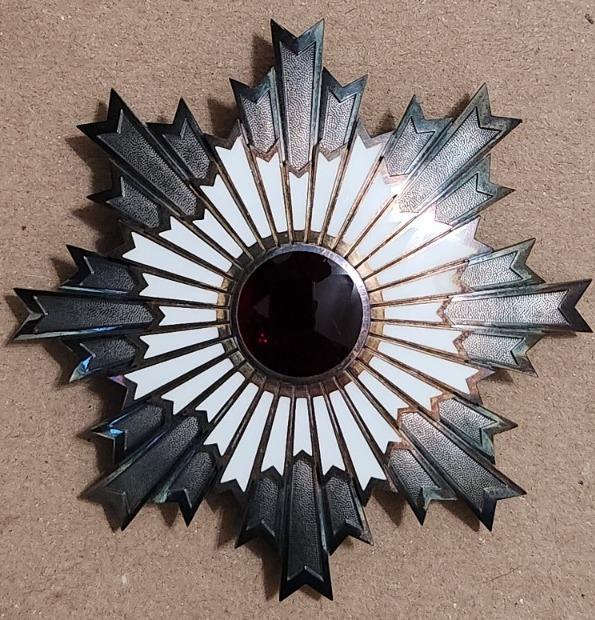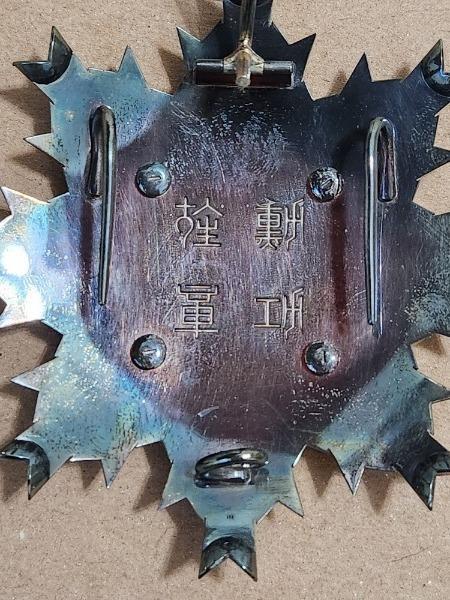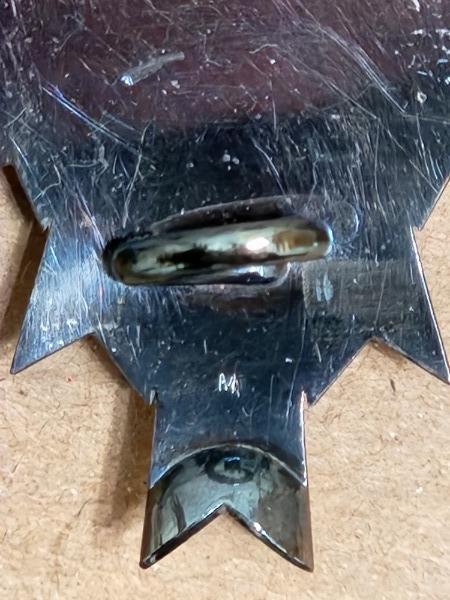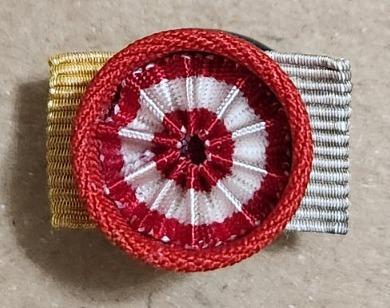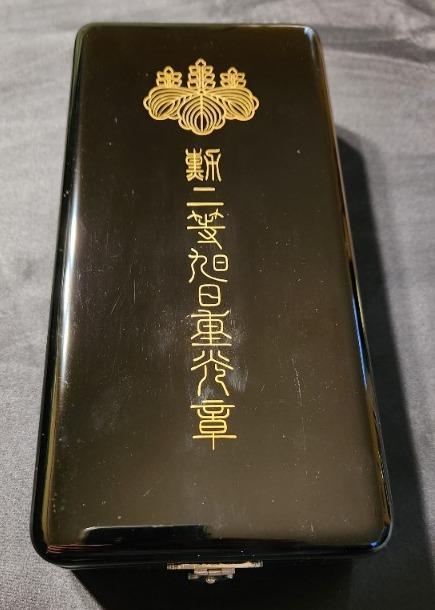-
Posts
468 -
Joined
-
Last visited
-
Days Won
20
Content Type
Profiles
Forums
Blogs
Gallery
Events
Store
Everything posted by TracA
-
My pleasure. I especially like the "longing fills my heart" postcard. Tracy
-
What a magnificent hallmarked ORS 4th Class. Wow. As you state, it can't be 100% guaranteed but it certainly appears highly likely. Tracy
-
Tony, Unfortunately I cannot contribute any knowledge, but I can say "great detective work!" I certainly understand your lottery comment and share your excitement. When I purchase a Japanese order or medal, finally get it in hand, and discover a hallmark that did not show up in the seller's photos, then it is definitely a celebratory moment. All the best, Tracy
-
No One, That is a magnificent OST 3rd Class, and with a reduced width cravat to boot. Very nice. In addition, what a wonderful box of medals, orders, and ribbon bars. The fact that they are attributable to a single recipient makes them even more special. Are there any hallmarks on the Order of the Rising Sun 4th Class? Tracy
-
Thank you, No One. This marks my fourth OST 3rd Class Cased, and each one is different in some way (either hallmark or reverse type). I have to admit that I am jealous of your OST 3rd Class with 美, mark of the Shobido workshop (Medals of Asia at https://asiamedals.info/threads/mark-on-japanese-orders-who-and-when.25816/). As I stated in my post (I think) about my ORS 2nd Class Cased, I find it a shame and a lost opportunity that dealers/sellers do not appear to look for hallmarks and then "call them out" on their descriptions or photos. All the best, Tracy
-
Greetings, It has been a while since I posted in this hallmarks thread. I just acquired a beautiful Order of the Sacred Treasure 3rd Class with a case and rosette. Both the badge and the rosette have hallmarks. The badge is marked 幣 (hei) below the rivet at the 6h and the rosette is marked ス (su). Known time coordinates for the mark 幣 is December 11, 1931 to September 4, 1933. see Medals of Asia at https://asiamedals.info/threads/mark-on-japanese-order-who-and-when.15113/, where it is speculated that this is a mark of the Japan mint. Note that the stylization of 勣 (kun) on the case lid is associated with the Meiji/Taisho era, but the mark 幣 clearly indicates a Showa era manufacture of the badge. At first I was surprised to see this, but upon further reflection I should not have been. It is not as if there was a "switch" turned off when the Showa era began on December 25,1926 which then led to cases already manufactured but not yet paired with orders to be simply discarded. Tracy Obverse: Reverse, with the hallmark just visible under the 6h rivet: Hallmark 幣 up close (best photo I could get): Case lid. The kanji is gold. The case has a bit of the chocolate color at the top and bottom edges where they meet when closed: Rosette, which is a beautiful blue and yellow: Finally, the rosette hallmark ス:
-
(1).thumb.jpg.38cff8cd9c5d55311a4208b0a83448ba.jpg)
Vietnam「 Navy」: "Trục Lôi Đĩnh - MLMS / Motor launch mine sweeper"
TracA replied to No one's topic in South East & East Asia
No One, You are creating an amazing informational database here related to the Vietnamese navy. All the best, Tracy -
More great postcards/pictures, Tony. Splendid! Tracy
-
Nick, Thank you for the clarification/further information. I will add it to my documentation. I am not very good, at all, at recognizing when cases and/or ribbons are temporally mismatched from their orders or decorations. That is something that I really need to work on. All the best, Tracy
-
Tony, Congratulations on your good luck. I look forward to seeing your grandfather's story unfold. Tracy
-
Thank you, NIck, as always for the fine tuned time coordinates. I will add that to my documentation. All the best, Tracy
-
Tony and No One, Thank you both for the kind words. I most certainly have to write things down as it helps organize and refine my thoughts. It also has the bonus of helping me remember stuff that I’ve learned/read and tried to absorb. All the best, Tracy
-
Great postcards, No One. Fascinating. Tracy
-
A little addendum to my post above from February 11, regarding my surprise that Article 4 of the Otani Medal of Merit Regulations document stated that when recipients of a merit medal are promoted through the ranks, previously received medals of merit shall be returned. While reading Nick Komiya’s thread “On the Story of the Order of the Golden Kite” on the War Relics Forum I was struck by post #26 in which he discussed Imperial Edict 38, March 21 of 1889. Here it was decreed that recipients could only have one rank of the Order of the Rising Sun or Sacred Treasure or Golden Kite at a time. So, for example, receipt of the OST 3rd Class necessitated returning the OST 4th Class previously received (within two weeks time if the recipient lived in Tokyo and within 30 days if the recipient lived elsewhere). Nick Komiya also mentions that this practice was not uncommon throughout Europe, although he notes one difference: in Japan if the recipient died, then the family could officially keep the order instead of having to return it. He states that this requirement, for the ORS and OST, was in place until October 1, 1973. Putting together the fact that the Otani Medal of Merit Regulations document was implemented in 1963 with what I learned and summarized above, then it should be no surprise to me that recipients of Otani Medals of Merit were required to return the previously awarded Medal of Merit upon receipt of the next highest award. It was simply following standard practice. I still have so much to learn. Tracy
-
Hi Tony, Great to see you pick-up this thread again. Wonderful pictures. All the best, Tracy
-
Fascinating miniature medal, No One. I’m going to display my ignorance of medals here, but I am surprised to see the rosette on the miniature medal ribbon and ribbon for the ribbon bar. I understand the lapel rosette, indicating receipt of the medal, but would not expect to see the rosette on the ribbons because the miniature medal and ribbon bar ribbon themselves indicate receipt of the medal. I have so much to learn. All the best, Tracy
-
I couldn’t resist jumping on this thread with my Golden Kite 5th Class. After reading this thread I’m confident that my example is a Type 7.1 Showa. The kanji on the case is silver. Tracy Obverse: Reverse: Close-up of the Kite: Case lid. The harsh light totally washed out the color of the kanji, but it is silver:
-
Greetings, To quote Monty Python: “and now for something completely different”. Well, it’s not really completely different. It’s just different. This post is not about an Otani merit badge, but rather a document about the criteria for the receipt of Otani merit badges. This document was included with the Violet Blossom Merit Badge that I obtained, tucked inside the cardboard box in which the lacquered case was housed. Translating this document was not easy for me and without the wonders of Google Docs and the Internet it would not have been possible. I cannot guarantee the accuracy of my translation, but I believe that I have come pretty close. Below will be a summary of the document followed by a question with respect to a single kanji that I encountered. Following that will be a picture of the document itself. I thought it odd that the document merely mentioned that the 2nd Class was broken down into two ranks, rather than covering the 2nd Class Additional and 2nd Class like was done for the 1st Class, and then only references the 2nd Class and not the 2nd Class Additional. Also, the document does not mention the 3rd Class and 3rd Class Additional. However, these rules were implemented in 1963. Well, that is at least when they are dated. Perhaps the 2nd Class Additional and 3rd Classes did not exist at that time and they were later additions? I am using the terms “medal” and “badge” interchangeably here, although perhaps I should not do so. I hope that some of you will find this post useful. All the best, Tracy The document is organized into five articles and 10 paragraphs, and for ease I broke it down into 30 distinct columns. The title is “Otani Women's Association Medal of Merit Regulations”, implemented on April 1, 1963 (Showa 38), and promulgated by the Otani Women’s Association Headquarters Office. The regulations start out with the statement that medals of merit are awarded for both outstanding achievements as well as donations of membership funds. The highest referenced achievement is termed “remarkable” and all subsequent references to achievement simply state and restate “secondary to the preceding paragraph”. So, the type of achievement necessary for each medal is not defined. For each medal, however, the dollar amount of the donation is defined. What I found most surprising was the statement in Article 4 (column 26) that when recipients of a merit medal are promoted through the ranks, previously received medals of merit shall be returned. The tiers are as follows: The Antique Blossom Medal of Merit (see below): remarkable achievements or a donation of 80,000 Yen or more. The Chrysanthemum Blossom Medal of Merit: achievements secondary to the preceding or a donation of 50,000 Yen or more. The Cherry Blossom Medal of Merit: achievements secondary to the preceding or a donation of 30,000 Yen or more. The Exceptional Honor Medal of Merit: achievements secondary to the preceding or a donation of 15,000 Yen or more. The Special Honor Medal of Merit: achievements secondary to the preceding or a donation of 10,000 Yen or more. The Exceptional Medal of Merit: achievements secondary to the preceding or a donation of 7,000 Yen or more. The Special Medal of Merit: achievements secondary to the preceding or a donation of 5,000 Yen or more. The First Class Additional Medal of Merit: achievements secondary to the preceding or a donation of 3,000 Yen or more. The First Class Medal of Merit: achievements secondary to the preceding or a donation of 2,000 Yen or more. The Second Class Medal of Merit: achievements secondary to the preceding or a donation of 1,000 Yen or more. In the beginning my eyes “saw” 菫花 for “Violet Blossom” when the first medal was referenced, but upon further examination it appears clear to me that the first kanji is actually 董, so that the highest medal referenced is actually 董花 for “Antique Blossom”. Am I missing something here? Perhaps at one time there was a medal known as the Antique Blossom, and it was replaced by the Violet Blossom? I have been to the Association’s website. Perhaps I should just email them my questions. See below, and note that the second reference is to the Chrysanthemum Blossom medal: Finally, the document itself:
-
Gordon and Azyeoman, Thank you both for your kind words. Tracy
-
No One, Thank you very much. I am quite pleased with the set and glad that I was able to obtain it. Take care, Tracy
-
Greetings, About a year and a half ago I posted about an Order of the Rising Sun 2nd Class set that I own. That set was an early neck badge with a breast star that had been altered by having the tines removed and replaced with a central screw and nut plate for fastening, in a case that had an incorrect medal bed (the medalbed for the breast star was actually for a 3rd Class neck badge) and was probably not original to the set. As happy as I am with that set, I've always wanted a more traditional set without an altered breast star and in a correct case. I was finally able to obtain one. The set below has some very minor damage to the white and green enamel on the obverse and reverse of the neck badge, but other than that it is in excellent condition. To my delight my suspicion after looking closely at the seller’s photo of the breast star reverse was confirmed once I had the set in hand: the breast star does indeed have the M mint mark on the 6h reverse ray between the bottom of the ray and the catch for the central tine. The neck badge? That has an M mint mark too, on the left side edge of the suspension when one is looking at the obverse of the badge. A matched set, so to speak. The set came with the rosette (no marks on that) and the beautifully lacquered case has gold kanji. Using the Medals of Asia website for information about the M mint mark and silver vs. gold kanji allows me to say this about dating this 2nd Class set: the neck badge and breast star are between March of 1930 and April of 1943, and the gold kanji puts the case up to sometime in 1940 at the latest, assuming that the set was indeed issued in the case and thereby using the M mint mark time coordinates to derive a terminus ante quem for the case. If the set was indeed issued in the case, then I would put the date between March of 1930 and sometime into 1940 at the latest. A note on hallmarks: Never once have I seen a seller mention in a write-up the presence of any hallmarks on any Japanese order or medal for sale, even when such hallmarks can be vaguely or even clearly seen in one of the sellers’ photos. I think that this is a lost opportunity for sellers, as I for one am always on the lookout for orders and medals with hallmarks. I hope that you enjoy this set. Some of the photos are, unfortunately, poorly lit. All the best, Tracy Obverse of the neck badge: Close-up of the neck badge: Reverse of the neck badge: Close-up of the neck badge reverse: M mint mark on the edge of the neck badge suspension: Breast star obverse: Breast star reverse, with the M mint mark barely visible: Breast star M mint mark: Rosette: Finally, the case lid:
-
Azyeoman, Congratulations on your most recent acquisition. A beautiful specimen coupled with great research that you've done. It's always nice to nab that very desirable piece. I looked at your lots in the Morton and Eden catalog. What a wonderful collection and such amazing research that you've accomplished. A question, if you don't mind: what's it like seeing part of your collection in an auction catalog? I know that someday I too will want to or have to sell my collections, and I've tried to imagine what that would feel like. All the best, Tracy

